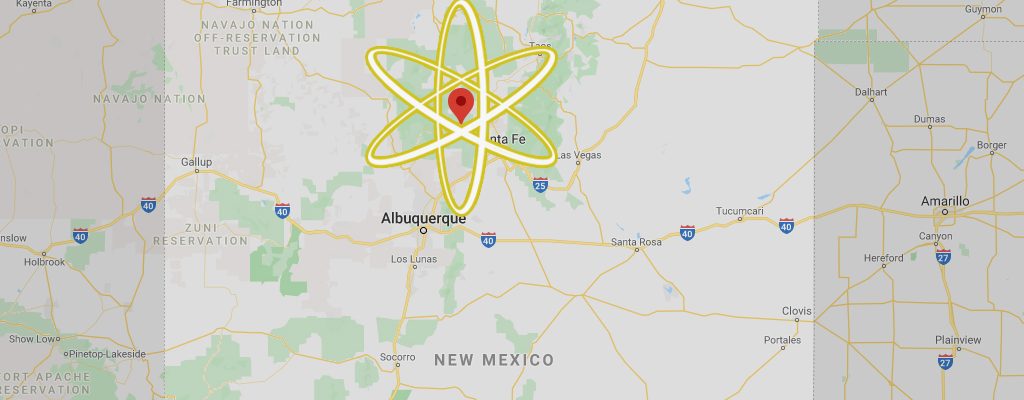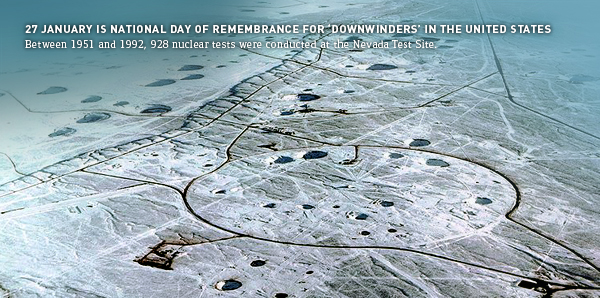2023 News Articles – All Posts
Nothing Found
It seems we can’t find what you’re looking for. Perhaps searching can help.
2022 Select Highlighted Press Items
Nuclear Modernization is the ’Absolute Minimum,’ STRATCOM Commander Says | March 8, 2022
US tested hypersonic missile in mid-March but kept it quiet to avoid escalating tensions with Russia | April 4, 2022
Putin’s Nuclear Threats Are a Wake-Up Call for the World | March 15, 2022
Intelligence report determines that Russia's WMD threats will grow as losses mount in Ukraine | March 19, 2022
China and the United States: It’s a Cold War, but don’t panic | March 10, 2022
Russian military doctrine calls a limited nuclear strike “de-escalation.” Here’s why. | March 8, 2022
North Korea says it will strike with nuclear weapons if South attacks | April 4, 2022
Flying Under The Radar: A Missile Accident in South Asia | April 4, 2022
2022 News Articles
Unknown Impact: County asks Los Alamos National Labs to assess environmental impact before expanding nuclear production
Santa Fe County wants Los Alamos National Laboratories to take stock of its impact on the environment and surrounding communities before pushing ahead with plans to expand.
By Leah Cantor | sfreporter.com Jan 27, 2021
On Tuesday, the Board of County Commissioners unanimously passed a resolution asking the National Nuclear Safety Administration to complete a new site-wide environmental impact statement for LANL in compliance with the National Environmental Policy Act before expanding plutonium pit production.
“The public health and safety is so important,” said Commissioner Anna Hansen, noting that the NEPA process is one of the only avenues for the public to weigh in on what goes on at the labs. “We have a longstanding tradition of promoting democracy and environmental protection in impending nuclear weapons by requesting that local governments be kept fully informed about projects to facilitate large scale production of additional plutonium warheads,” she said.
Yet right now, the labs’ full impact on Northern New Mexico is unknown. It’s been more than a decade since the last time the NNSA produced an EIS for the laboratory, and a lot has changed since then, including regional understanding of wildfire risks and potential water contamination from the labs.
Remembering the Night Two Atomic Bombs Fell—on North Carolina
Sixty years ago, at the height of the Cold War, a B-52 bomber disintegrated over a small Southern town. An eyewitness recalls what happened next.
By: Bill Newcott | nationalgeographic.com PUBLISHED JANUARY 22, 2021
BILLY REEVES REMEMBERS that night in January 1961 as unseasonably warm, even for North Carolina. But it got a lot hotter just before midnight, when the walls of his room began glowing red with a strange light streaming through his window.
“I was just getting ready for bed,” Reeves says, “and all of a sudden I’m thinking, ‘What in the world…?'”
The 17-year-old ran out to the porch of his family’s farm house just in time to see a flaming B-52 bomber—one wing missing, fiery debris rocketing off in all directions—plunge from the sky and plow into a field barely a quarter-mile away.
“Everything around here was on fire,” says Reeves, now 78, standing with me in the middle of that same field, our backs to the modest house where he grew up. “The grass was burning. Big Daddy’s Road over there was melting. My mother was praying. She thought it was the End of Times.”
Like any self-respecting teenager, Reeves began running straight toward the wreckage—until it exploded.
The Doomsday Datavisualizations



In setting the Doomsday Clock, the Bulletin’s Science and Security Board consults widely with colleagues across a range of disciplines and considers qualitative and quantitative information from a wide array of sources. These three visualizations display some of the kinds of public data that are available in the Bulletin’s three coverage areas: nuclear weapons, climate change, and disruptive technology.
The Doomsday Clock is a design that warns the public about existential threats, a metaphor that reminds the world of the perils that must be addressed if humanity is to continue survive. These three data visualizations can be seen as an artistic extension of the original design.
DESIGNED BY PENTAGRAM
Giorgia Lupi, Sarah Kay Miller, Phil Cox,
Ting Fang Cheng, Talia Cotton
In November 2011, the U.S. Senate designated January 27th as a National Day of Remembrance for the Nevada Test Site Downwinders. The Senate recognized the harm caused to Americans from radioactive fallout from the aboveground atomic tests in Nevada, which began on January 27, 1951 and ended on July 17, 1962. Nuclear testing by the U.S. government started in New Mexico with Trinity in July 1945, and the Crossroads Series of three tests followed in the Pacific in 1946. The United States took part in nuclear testing as part of the escalating Cold War arms race, and nuclear weapons proliferated. With each nuclear test, radioactive fallout spread globally.
FOR MORE INFORMATION VIEW LINKS BELOW
Downwinders And The Radioactive West Premieres January 27 at 7PM on PBS Utah
Why a National Day of Remembrance for Downwinders is Not Enough
Congress Introduces Legislation to Expand Compensation for Radiation Exposure
Why a National Day of Remembrance for Downwinders is Not Enough
“A day of recognition is important – these communities deserve to be recognized for the unimaginable sacrifice they unknowingly made to their country. But it is not enough. The best and most important way to honor these victims of the US nuclear weapons program is by compensating them and providing health care for the illnesses and deaths they have suffered.”
BY: LILLY ADAMS GUEST COMMENTARY, UCS | JANUARY 26, 2021, 10:56 AM EST
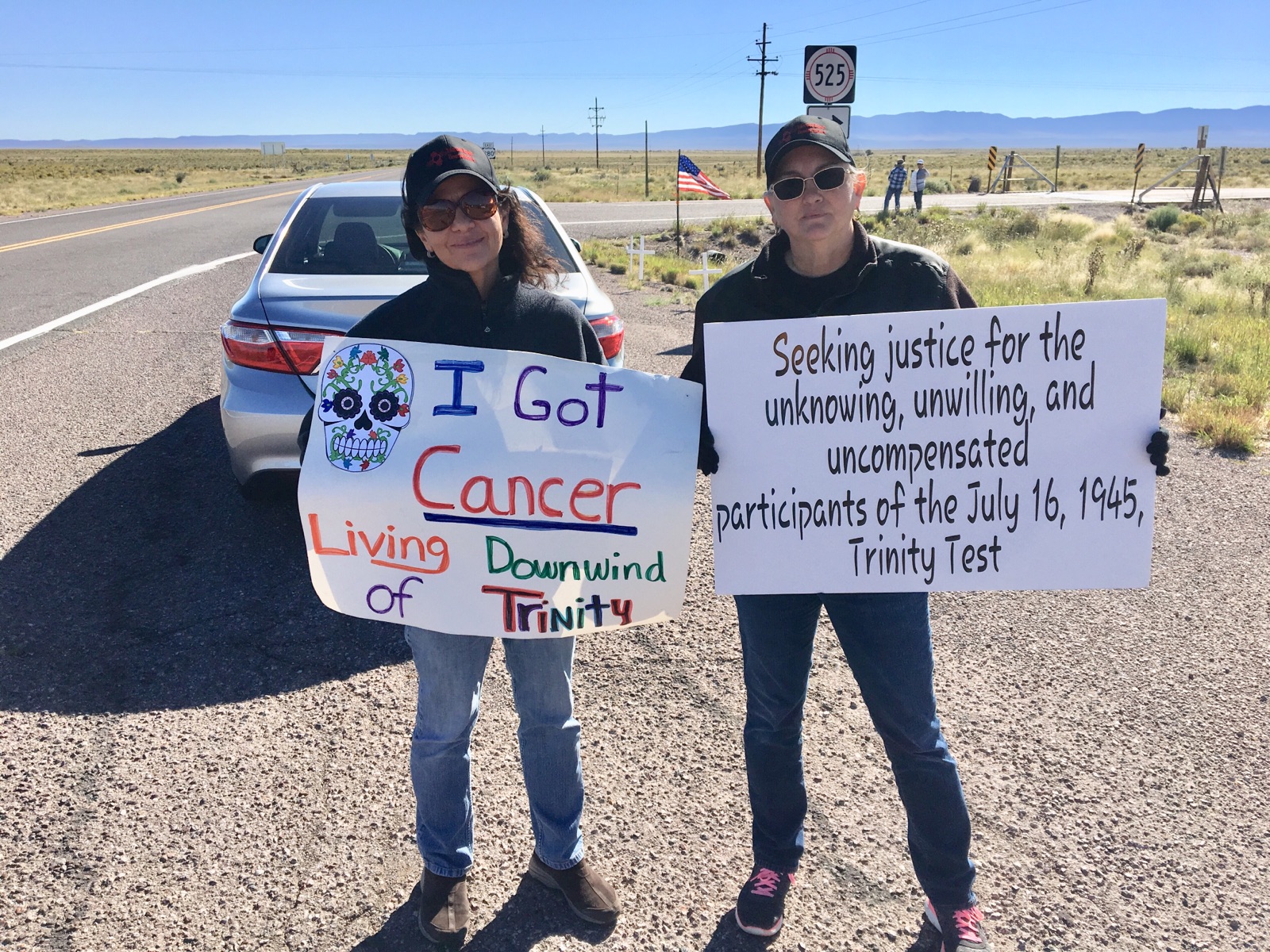
There’s no question that the US government killed and sickened many of its own people through explosive nuclear testing: estimates of the death toll in the United States from nuclear testing vary widely, from tens of thousands to hundreds of thousands. But the harm doesn’t stop there. Other nuclear weapons activities, like uranium mining, production, and waste storage and cleanup, have also caused unknown deaths and illnesses. As is so often the case, the people who have borne the heaviest burden of these activities are often people of color, Indigenous communities, women and children, and those living in poor, rural communities. These people are the largely ignored, often forgotten casualties of the Cold War and the US nuclear weapons program.
The Most Dangerous Situation Humanity Has Ever Faced
“The Bulletin of the Atomic Scientists announced Wednesday that the hands of the iconic Doomsday Clock remain at 100 seconds to midnight — as close to the end of humanity as the clock has ever been. The temptation, of course, in a dark hour is to cling to even the faintest signs of light and hope. And the truth is that there are some encouraging signs now emerging. However, we continue to teeter at the brink and moving the Clock away from midnight would provide false hope at a time when urgent action is what is needed.”.
Opinion by Edmund G. Brown Jr. and Robert Rosner / Updated 11:17 AM ET, Wed January 27, 2021
For a year now, the world has been ravaged by the horrors of Covid-19. It has caused millions to lose their jobs, overwhelmed health care systems and dramatically changed how we live. The disease has killed more than 2 million people and infected 100 million around the globe.
Even so, we face fundamentally greater threats to humanity than this pandemic. We refer to the catastrophic dangers which nuclear weapons and climate change pose — dangers that preceded this pandemic and will persist long after it ends. Unfortunately, and unlike the priority given to developing a vaccine against the virus, little progress was made to reduce the danger of the world’s nuclear weapons arsenal or to effectively slow the carbon emissions warming our planet in 2020. The sudden appearance and confused response to the virus makes all too clear how ill-prepared the world can be when it has to deal with an unprecedented threat of global magnitude.
UN Building Lit Up to Celebrate The Nuclear Ban Treaty Entry Into Force January 22





Here are five examples of the type of activities that will be Illegal under international law on 22 January 2021
One of the main problems with talking about nuclear weapons is that it often becomes abstract and hypothetical. Most people barely know which countries have nuclear weapons and do not know to what extent other actors are involved in maintaining and upholding nuclear weapons.
When the Treaty on the Prohibition of Nuclear Weapons (TPNW) enters into force on 22 January 2021, that will need to change.
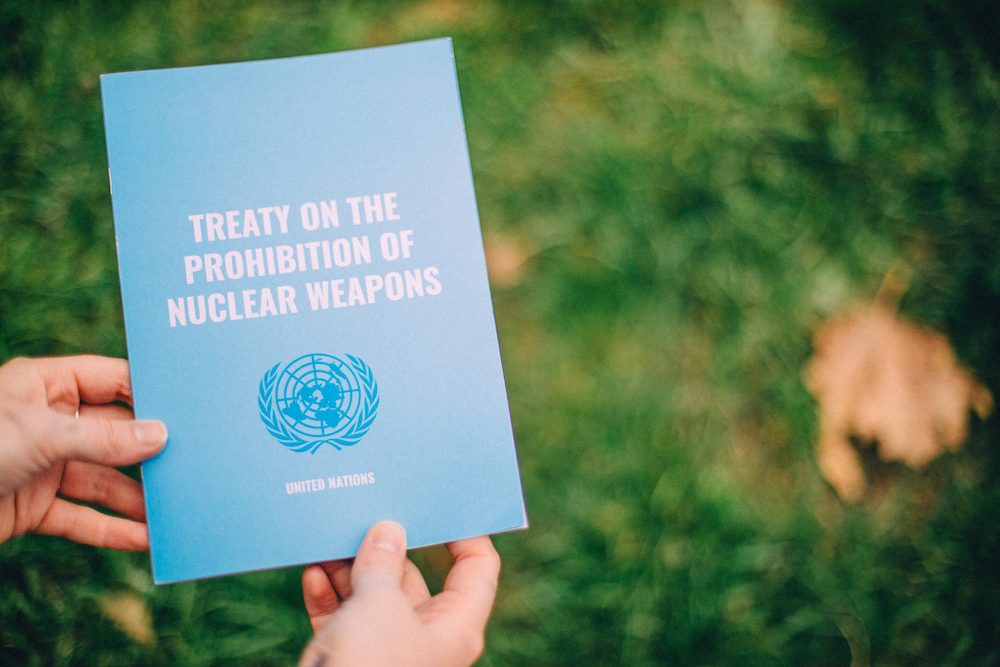
Here are five examples of the kind of activities that will be prohibited under the TPNW and who is currently doing this today. While the treaty will only be legally binding in the countries that have ratified the treaty, it will still create a powerful norm and should lead to increased protests and outrage in countries that haven’t joined the treaty that are behaving in contradiction of this new instrument of international law.
What the treaty prohibits
Article 1 of the treaty prohibits states parties from developing, testing, producing, manufacturing, transferring, possessing, stockpiling, using or threatening to use nuclear weapons, or allowing nuclear weapons to be stationed on their territory. It also prohibits them from assisting, encouraging or inducing anyone to engage in any of these activities.
Treaty Seeks End to Nuclear Madness
It is the beginning of a new movement that will see the elimination of the existential nuclear threat.
Ralph Hutchison, John LaForge | progressive.org
On January 22, the Treaty on the Prohibition of Nuclear Weapons will enter into force. The treaty bans the development, production, possession, deployment, testing, use and just about anything else you can imagine related to nuclear weapons.
Fifty years later, nine nuclear-armed militaries possess more than 13,000 nuclear weapons, arsenals that mock their claimed commitment to disarm “at an early date.”
Approved at the United Nations by 122 countries in 2017, and subsequently signed by 86 and ratified by 51 nations, the nuclear weapons ban will join the venerated status of international prohibitions already established against lesser weapons of mass destruction. These earlier agreements include the Geneva Gas Protocol, the Chemical Weapons Convention, the Biological Weapons Convention, the Ottawa Treaty or Mine Ban Convention and the Convention on Cluster Munitions.
Atop the Powerful Budget Committee at Last, Bernie Sanders Wants to Go Big
To the chagrin of Republicans, the democratic socialist senator will play a central role in shepherding Joseph R. Biden Jr.’s agenda through Congress.
“Sanders, the next chairman of the Senate Budget Committee, plans to take a hard look at fraud at the defense budget in his new perch, he tells POLITICO
“You understand you’re talking to the guy who led the effort to lower defense spending by 10 percent,” the Vermont Independent and self-described Democratic Socialist boasted.
You’re talking about the military budget, which is now higher than the next 10 nations combined,” he continued. “You’re talking about the Pentagon budget, which is the only major government agency which has not been able to undertake an independent audit. And I don’t think anyone has any doubt that there’s massive waste and cost overruns in the military budget.”
“I think if you check the record,” he added, “you’ll find that every major defense contractor has been found guilty of collusion and fraud.”
By Alan Rappeport and Jim Tankersley | nytimes.com
Shortly before the 2016 election, Paul D. Ryan of Wisconsin, the Republican nominee for vice president and the speaker of the House, told a group of college Republicans why he thought Democrats winning control of the Senate would be a policy nightmare.
“Do you know who becomes chair of the Senate Budget Committee?” Mr. Ryan asked. “A guy named Bernie Sanders. You ever heard of him?”
Republicans have long feared the prospect of Mr. Sanders, a self-described democratic socialist from Vermont, taking the helm of the powerful committee given his embrace of bigger government and more federal spending with borrowed money. With Democrats reclaiming the Senate, that fear is about to become a reality. Mr. Sanders, the most progressive member of the chamber, will have a central role in shaping and steering the Democrats’ tax and spending plans through a Congress that they control with the slimmest of margins.
Concern grows over massive US cyberattack – New Mexico’s national labs, Los Alamos and Sandia, cited as possible targets among many
Jay Coghlan, executive director of Nuclear Watch New Mexico, said the breach escalates the threat of a nuclear catastrophe.
“On top of the dangers that we faced during the Cold War this now raises new concerns…Could our nuclear weapons be hacked for malicious reasons? Could hackers take advantage of LANL’s checkered safety and security record and cause a life threatening event in our own backyard? The sooner we all have a nuclear weapons-free world the safer we will be.”
Copyright © 2020 Albuquerque Journal / BY: T.S. LAST / JOURNAL NORTH
 SANTA FE — While the Department of Energy says that a cyberoffensive was limited to business networks, concerns remain about the depth of the breach and what threat it could still pose to national security and New Mexico’s two national laboratories.
SANTA FE — While the Department of Energy says that a cyberoffensive was limited to business networks, concerns remain about the depth of the breach and what threat it could still pose to national security and New Mexico’s two national laboratories.
Some news reports say that the hacks are believed to have been instigated by a Russian intelligence agency. The reports specifically mention Los Alamos and Sandia national laboratories, where atomic research is conducted, as being vulnerable.
In addition, Los Alamos National Laboratory is tasked with producing plutonium pits, the triggering device in nuclear warheads.
Earlier this week the Cybersecurity and Infrastructure Security Agency (CISA) issued a warning, calling the hack “a grave risk” to federal, state, local and tribal governments, as well as critical infrastructure entities and private sector businesses. It said the suspected breach dates back to at least March.
In a joint statement this week, CISA, the FBI and the director of national intelligence said they were working together to investigate a “significant ongoing cybersecurity campaign.”\
‘Highly skeptical’: House Armed Services chairman concerned about SRS pit production
Biden administration expected to take ‘critical look’ at next-generation warhead, estimated to be twice as explosive as Trident
By: Colin Demarest cdemarest@aikenstandard.com / postandcourier.com
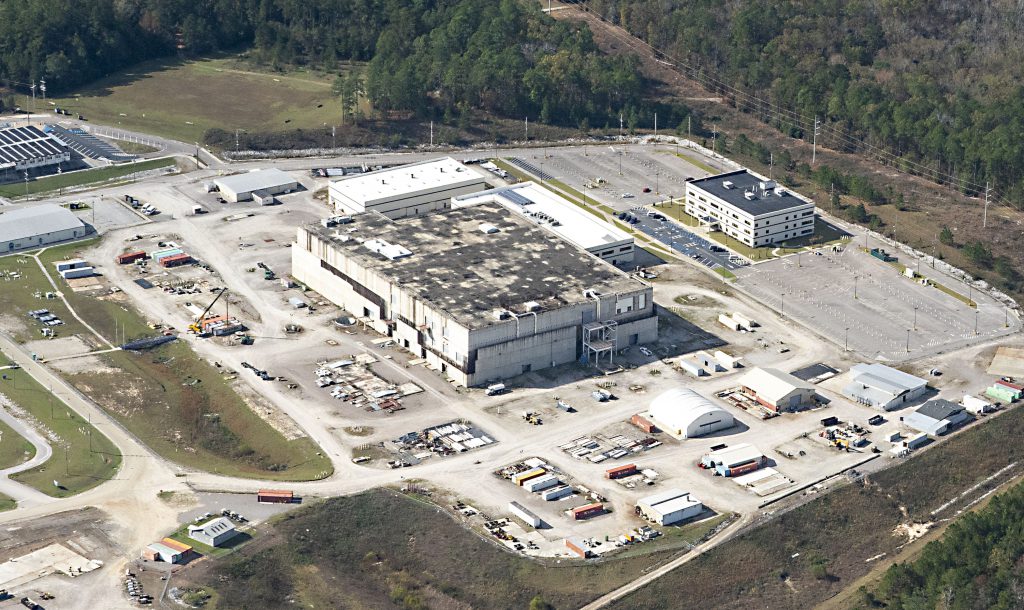
Photo courtesy of High Flyer
Likening the conversion of the failed Mixed Oxide Fuel Fabrication Facility to flipping a bowling alley into a restaurant, U.S. Rep. Adam Smith said he was “highly skeptical that they’re going to be able to turn that building into an effective pit production facility. Highly skeptical.”
US Nuclear Warhead Standoff ‘Has Significant Implications for UK’
Biden administration expected to take ‘critical look’ at next-generation warhead, estimated to be twice as explosive as Trident
By: Dan Sabbagh / theguardian.com
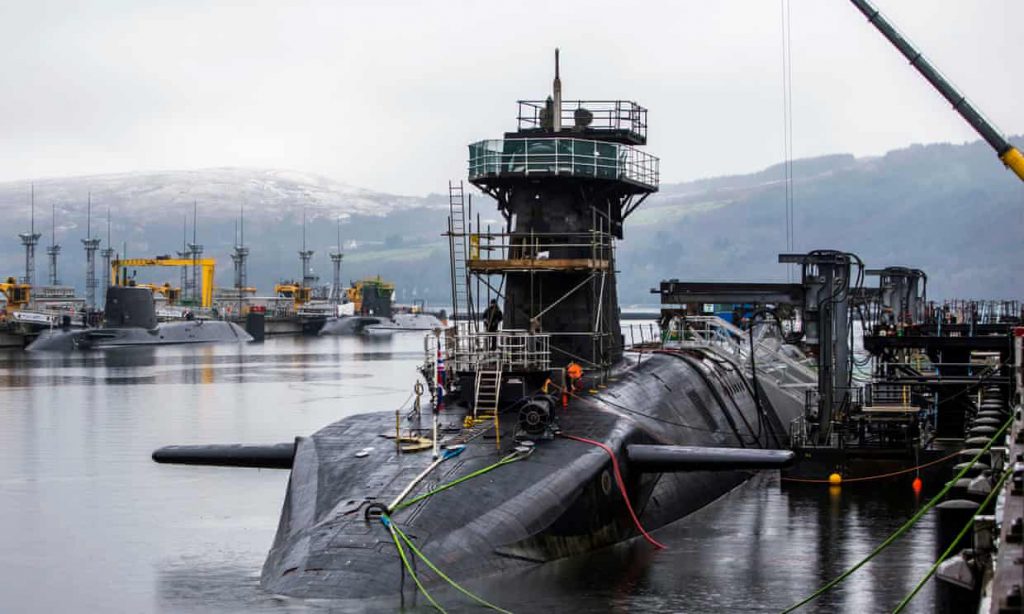
Britain’s most senior defence official admitted there would be “very significant implications” for the future of the Trident nuclear deterrent if Democrats in the US Congress refused to fund a next-generation warhead.
Sir Stephen Lovegrove, permanent secretary at the Ministry of Defence, said that the UK was monitoring the US standoff closely but could not say what impact a refusal to start work on the new W93 warhead would have – or how many billions it would cost.
THE SOFTENING RHETORIC BY NUCLEAR-ARMED STATES AND NATO ALLIES ON THE TREATY ON THE PROHIBITION OF NUCLEAR WEAPONS
BY: TOM SAUER & CLAIRE NARDON / warontherocks.com
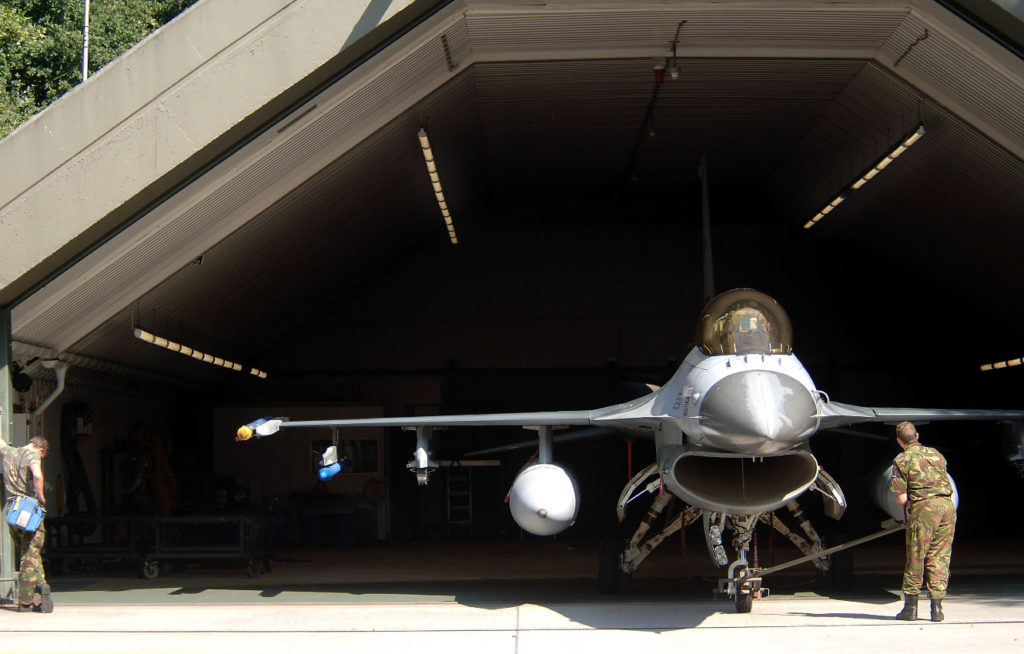
Probably the most iconic moment during the negotiations on the Treaty on the Prohibition of Nuclear Weapons (or “nuclear ban treaty”) was the gathering of a dozen allied ambassadors standing around U.S. Ambassador Nikki Haley in the corridors of the U.N. building in New York, protesting against the ongoing negotiations. While nuclear-armed states and NATO allies remain opposed to the treaty, the tone is softening, and at least two NATO allies are breaking the consensus.
Bombs Away: Weapon Systems That Biden Administration Could Curtail or Retire
Here are some of weapons that might be reviewed by the president-elect
By: Michael R. Gordon | Wall Street Journal
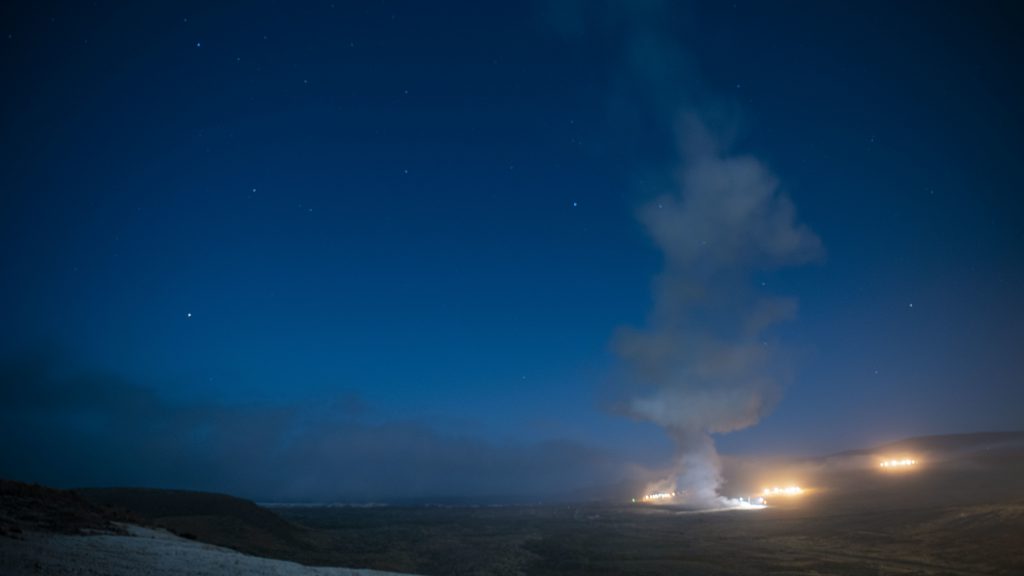
President-elect Joe Biden has said that he will reduce “excessive” expenditures on nuclear modernization. The Congressional Budget Office estimated in 2017 that the Pentagon’s plans for updating and sustaining the nuclear triad of air, sea and land-borne weapons would cost $1.2 trillion, and some lawmakers say the eventual cost might exceed $1.5 trillion. Here are some of the weapons that might be reviewed.
Continue reading
DOE Publishes Reactor Impact Statement
“Given that no clear mission need has been established for the VTR and with an estimated price tag of $3 billion to $6 billion, with completion ranging from 2026 to 2030, it is doubtful if the project will go forward..Just as for other costly, complex DOE projects, the price tag is certain to grow and the schedule certain to slip if the project is pursued.” — Savannah River Site Watch
By: NATHAN BROWN nbrown@postregister.com
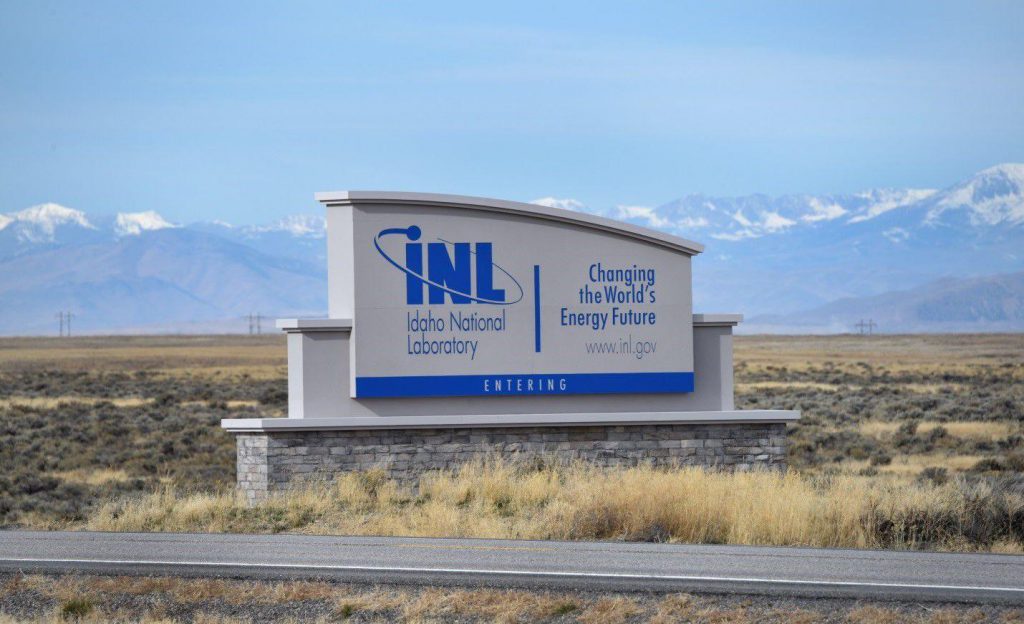
The U.S. Department of Energy has released the draft environmental impact statement for a test reactor it would like to build at Idaho National Laboratory.
The statement on the Versatile Test Reactor was released Monday and is available online through the Office of Nuclear Energy’s website, energy.gov/ne/office-nuclear-energy. Public comment will conclude 45 days after the federal Environmental Protection Agency publishes notice in the Federal Register, which is expected to happen on Dec. 31. DOE will then hold two virtual public hearings, dates to be announced.
Continue reading
DOE Awards Savannah River National Laboratory Management and Operating Contract
Cincinnati – Today, the U.S. Department of Energy (DOE) Office of Environmental Management (EM) awarded the Savannah River National Laboratory (SRNL) Management and Operating (M&O) contract to Battelle Savannah River Alliance, LLC (BSRA) of Columbus, OH.
The Cost-Plus-Award-Fee contract will include a 5-year base period (inclusive of 120 day transition period) and potential award terms of up to 5 more years, for a total period of up to 10 years. The anticipated contract value is approximately $3.8 billion over the potential 10-year period of performance.
The procurement was competed as a full-and-open competition, and EM received three proposals. The Department determined the BSRA proposal provided the best value to the Government considering Laboratory Vision, Key Personnel, Management and Operations, Past Performance, Transition Plan, and Cost and Fee.
Actual amount of radioactive contamination caused by the March 2011 Fukushima Daiichi Nuclear Power Plant accident, as revealed by Japanese citizen scientists
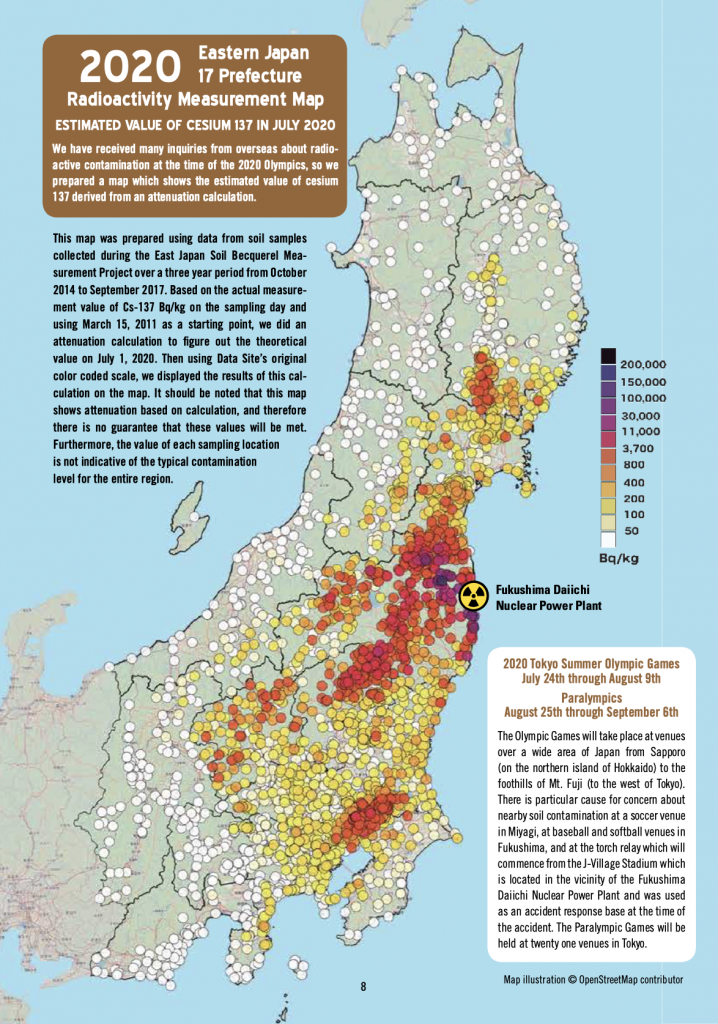
As a result of this investigation, [Minna-no Data Site] determined that the radioactive contamination was by no means limited to Fukushima Prefecture and that one hundred years from now there will still be several highly-contaminated areas where humans should not live.
Uninhabitable: Booklet by Citizen Scientists Uncovers True Extent of Radioactive Contamination in Japan’s Soil and Food
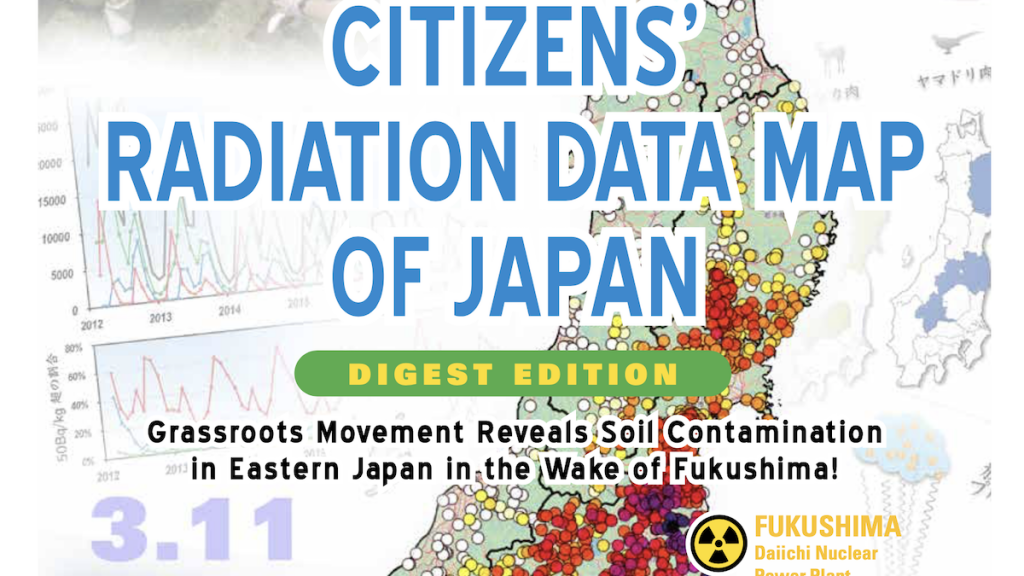
“As a result of this investigation, we determined that the radioactive contamination was by no means limited to Fukushima Prefecture and that one hundred years from now there will still be several highly-contaminated areas where humans should not live.
Now, eight years after the accident, not only has the government yet to establish a criterion for radioactive concentration in the soil, but the authorities are continuing to enforce the policy of compelling people to return to their homes if the air dose rate goes below 20 mSv/year.”
By: beyondnuclearinternational
From Minna-no Data Site, a citizen’s collaborative radioactivity monitoring project
Minna-no Data Site (Everyone’s Data Site) is a network of 30 citizens’ radioactivity measurement laboratories from all over Japan.
After the 2011 Fukushima accident, many independent citizen-operated radioactivity measurement laboratories sprang up across Japan.
In September 2013, a website called “Minna-no Data Site” was established in an effort to integrate all of the radioactivity measurement data into a common platform and disseminate accurate information in an easy-to-understand format.
The world’s first “smart” nuclear bomb. But…isn’t the truly smartest thing to have a world with no nuclear bombs?
B61-12 full-weapon system demonstration at Tonopah Test Range
Facing Widespread Opposition, Feds Withdraw Nuke Waste Plan
“Some commenters said the NRC should have launched a more thorough process for making new rules instead of simply trying to reinterpret existing rules, while others said the plan should have included a process where the public could help decide whether nuclear waste would be allowed at a particular disposal site.”
BY: TRAVIS BUBENIK | courthousenews.com Dec 17, 2020
(CN) — Federal regulators are withdrawing a nuclear waste proposal that had prompted an unusually widespread chorus of opposition, including from those who worried the plan could have led to radioactive waste being shipped to local landfills across the U.S.
The proposal centered on what’s commonly referred to as “very low-level” waste, which includes things like contaminated construction debris or soil from shuttered nuclear power plants.
Under the plan, the Nuclear Regulatory Commission would have reinterpreted rules on that kind of waste so that disposal facilities without specific licenses to handle the waste could have taken it in anyways through an exception.
The proposal sparked a wave of pushback from an unlikely alliance of state regulators, environmental groups and even a prominent company in the business of nuclear waste management.
LANL contractor hits first goal in toxic waste cleanup projects
“N3B is going after the low-hanging fruit, cleaning up less than 2,000 cubic yards of contaminated dirt,” said Jay Coghlan, executive director of Nuclear Watch New Mexico. “Let’s hear their plan for cleaning up 200,000 cubic yards of radioactive and toxic wastes at Area G that are already migrating towards our irreplaceable groundwater.”
Coghlan said N3B touting this small part of the cleanup smacks of “propaganda to promote the toothless 2016 consent order.”
BY: Scott Wyland swyland@sfnewmexican.com| Santa Fe New Mexican Dec 16, 2020
Los Alamos National Laboratory’s contractor in charge of cleaning up radioactive waste produced during the Cold War and Manhattan Project has completed its first goal under a 2016 agreement.
Newport News Nuclear BWXT, also known as N3B, finished removing almost 1,800 cubic yards of contaminated soil and debris from four sites in Upper Mortandad, Upper Cañada del Buey and Threemile canyons.
Crews packed and shipped the material to a disposal site in Clive, Utah.
“Cleanup of these sites ultimately protects human health by eliminating the likelihood that contamination will reach the water system through stormwater runoff,” Brenda Bowlby, head of N3B’s soil remediation program, said in a statement.
Removing the toxic debris also protects the area’s wildlife, she added.
The cleanup project was one of 17 that N3B aims to do under the 2016 agreement between the U.S. Department of Energy and the state Environment Department.
Critics say Turkey’s unfinished nuclear plant already redundant
Turkey’s power plant building spree has resulted in an enormous idle capacity but the construction of new plants continues at the expense of taxpayers despite the country’s bruising economic woes.
BY: Thomas H. Goebel The Conversation | almonitor.com
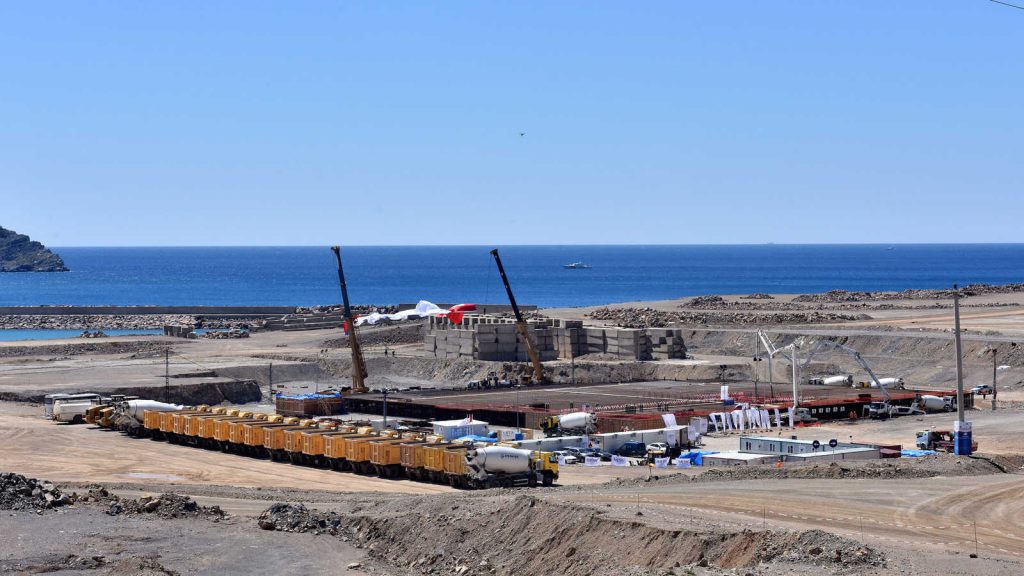
Turkey’s ruling Justice and Development Party (AKP), in power for 18 years, is under increasing fire for poorly planned, prodigal investments whose long-term financial fallout is coming into sharper relief as the country grapples with severe economic woes. Standing out among the most dubious investments is a series of power plants, including a nuclear energy plant still under construction, that have created an idle capacity threatening to haunt public finances for years.
East Coast nuke plants prepare to send waste to New Mexico via Holtec project
East coast nuclear power plants are getting ready to send their waste to southeast New Mexico as they are shut down.
BY: Adrian Hedden Carlsbad Current-Argus
Holtec International recently acquired licenses to decommission multiple plants as it proceeds through a licensing process to build and operate a facility to temporary store spent nuclear fuel rods near the Eddy County-Lea County line.
The ongoing license application for the first phase of the project before the federal Nuclear Regulatory Commission (NRC), would allow Holtec to store 500 cannisters at the site –or about 8,000 metric tons – of spent fuel, but the company expects up to 20 more phases as capacity is needed.
The fuel would be transported via rail from generator sites from across the U.S. to be stored in New Mexico until a permanent repository is operational.
‘Highly skeptical’: House Armed Services chairman concerned about SRS pit production
Smith’s doubts are neither new nor uncommon. And they cast a dark shadow over what many in Aiken County see as a jobs jackpot, among other things.
BY: Colin Demarest cdemarest@aikenstandard.com | postandcourier.com

Photo courtesy of High Flyer
In blunt, if not damning, remarks at a Friday event, the chairman of the House Armed Services Committee expressed serious reservations about plutonium pit production at the Savannah River Site and questioned the competency of the National Nuclear Security Administration, overall.
Likening the conversion of the failed Mixed Oxide Fuel Fabrication Facility to flipping a bowling alley into a restaurant, U.S. Rep. Adam Smith said he was “highly skeptical that they’re going to be able to turn that building into an effective pit production facility. Highly skeptical.”
John Pilger: The Most Lethal Virus is Not Covid-19. It is War.
Covid-19 has provided cover for a pandemic of propaganda, says John Pilger.
BY: John Pilger | consortiumnews.com
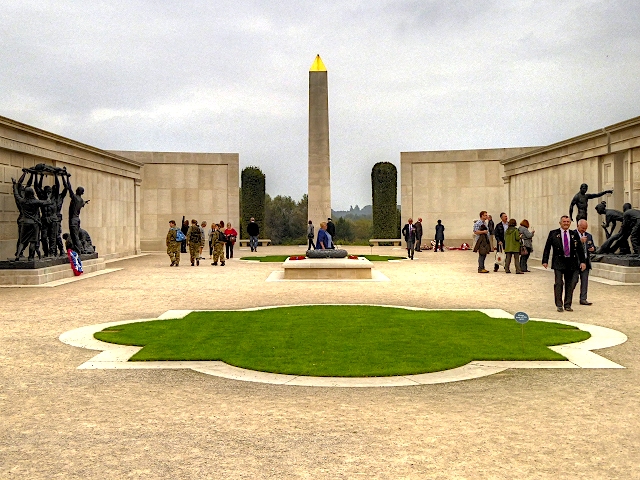
Britain’s Armed Services Memorial is a silent, haunting place. Set in the rural beauty of Staffordshire, in an arboretum of some 30,000 trees and sweeping lawns, its Homeric figures celebrate determination and sacrifice.
The names of more than 16,000 British servicemen and women are listed. The literature says they “died in operational theatre or were targeted by terrorists”.
On the day I was there, a stonemason was adding new names to those who have died in some 50 operations across the world during what is known as “peacetime”. Malaya, Ireland, Kenya, Hong Kong, Libya, Iraq, Palestine and many more, including secret operations, such as Indochina.
Rising Resistance to Supporting the US War Budget: The House and Senate Leaders Who Voted Against War
December 14th, 2020 – by Gar Smith / Environmentalists Against War

(December 13, 2020) — On December 8, Congress voted on H.R. 6395, the House version of National Defense Authorization Act. This year’s NDAA — approaching three-quarters of $1 trillion — consumes more than half of the nation’s entire discretionary budget. The NDAA included a 3 percent increase in military pay. That is more than double the 1.3 percent Cost of Living Increase granted to retired civilians.
Typically, a vote on funding the Pentagon passes with near-unanimity. Not so this year. According to House Roll Call 238, 78 Representatives cast a “Nay” vote for passing the Pentagon’s $740 billion budget. The bill was supported by 140 Republicans and 195 Democrats. More Republicans (40) voted against the massive spending bill than Democrats (37)
Chairman of House Armed Services Committee Reveals Great Skepticism in NNSA’s Ability to Covert SRS MOX Facility to Plutonium Pit Production, Refers to $6 Billion Project as Potential “Rat Hole”
Savannah River Site Watch https://srswatch.org/
https://srswatch.org/
Columbia, South Carolina USA For Immediate Release December 14, 2020
The powerful chairman of the House Armed Services Committee, Representation Adam Smith, has raised great doubt about the U.S. Department of Energy’s ability to pull off the project at the Savannah River Site (SRS) in South Carolina to produce plutonium “pits,” or cores, for nuclear warheads.
In an online presentation on December 11 with the Center for Strategic and International Studies, Rep. Smith (D-WA) expressed deep concern in the ability of the DOE’s National Nuclear Security Administration (NNSA) to pull off the project to convert the partially finished plutonium fuel (MOX) plant, halted in 2017, into the proposed Plutonium Bomb Plant (PBP) at SRS. The event featured Rep. Smith talking about nuclear weapons matters coming before Congress in 2021. The transcript of the event was released late in the afternoon of December 11.
Continue reading
Kairos Power test reactor comes to repurposed Oak Ridge site
Kairos Power plans to site a test reactor it has dubbed Hermes at the East Tennessee Technology Park (ETTP) in Oak Ridge, Tenn.
BY: ANS Nuclear News Staff | ans.org
The company has executed a Memorandum of Understanding with Heritage Center, LLC, to acquire the former K-33 gaseous diffusion plant site at ETTP, subject to ongoing due diligence evaluations. The announcement was made today, during the 2020 East Tennessee Economic Council Annual Meeting and Awards Celebration.
“We are thrilled at the prospect of coming to East Tennessee,” said Michael Laufer, cofounder and chief executive officer of Kairos Power. “The infrastructure available at ETTP, combined with its proximity to key collaborators at the Oak Ridge National Laboratory, makes this a great location to demonstrate our technology. The successful commissioning of Hermes builds on our current technology development programs and extensive engagement with the U.S. Nuclear Regulatory Commission. Ultimately, Hermes will prove that Kairos Power can deliver real systems at our cost targets to make advanced nuclear a competitive source of clean energy in the United States.”
Lou Martinez, vice president of strategy and innovation, added, “Today is an important day for Kairos Power. We are celebrating our 4th anniversary by showcasing an important milestone.”
UT, Texas A&M Systems hope to manage Y-12 National Security Complex and the Pantex Plant
Texas A&M is part of Triad National Security, LLC (Texas A&M, U. of California and Battelle), and is currently already managing the Los Alamos Lab.
By: Monica Kast | Knoxville News Sentinel
The University of Tennessee System and the Texas A&M University System have announced plans to compete as a team for a bid that would allow them to manage and operate both the Y-12 National Security Complex and Pantex Plant.
If the bid is accepted, the schools would join a team that would manage and operate both Department of Energy facilities, which manufacture, store and monitor the nation’s nuclear weapons.
Both universities currently partner with the plants in their state and provide “extensive workforces for the plants,” UT said in a news release.
Russian Ambassador to U.S. Sees Hope for Nuclear Arms Treaty Extension
Antonov termed the 11-year-old START treaty “the gold standard of arms control agreements.”
BY: John Grady | news.usni.org
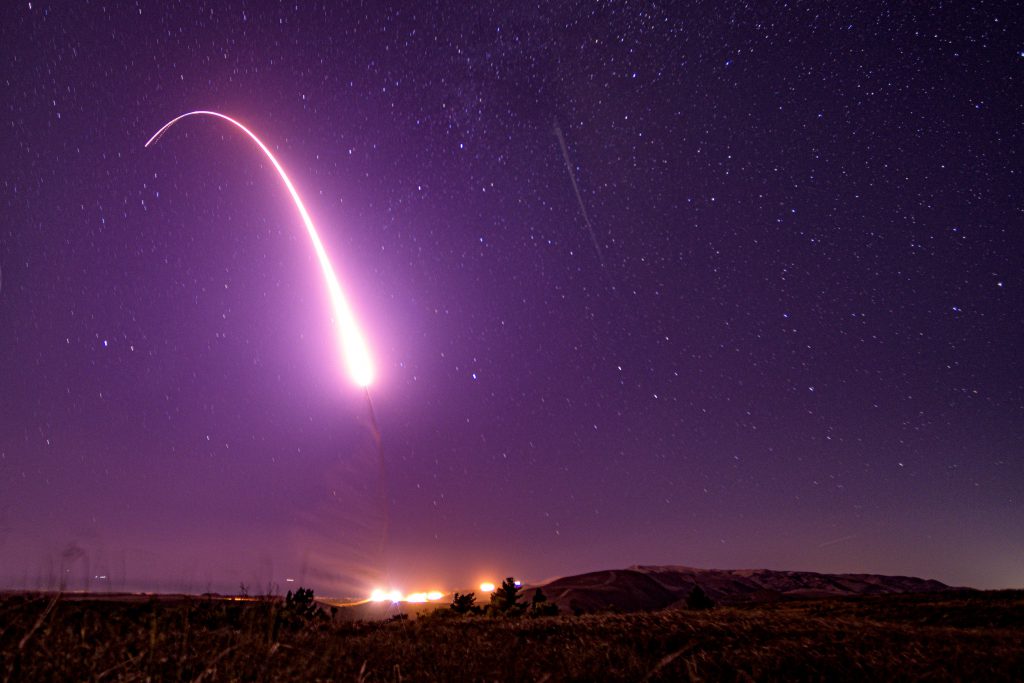
The Russian ambassador to the United States said there is still time to extend the Strategic Arms Control Treaty, due to expire in early February, even despite the upcoming presidential transition.
Anatoly Antonov, whose diplomatic career largely has been spent focused on major arms control issues, said the START treaty is a “key issue” for Russia. “We have time; we can get it done very quickly.” Speaking at a Brookings Institution online forum last week, he added, “we are in close contact with Marshall Billingslea,” the Trump administration’s top envoy on arms control.
Defying Trump, House Approves Defense Bill with Veto-Proof Majority
Cheney touted the bill’s support for nuclear triad modernization and its inclusion of a new a new fund to deter China in the Pacific, adding that it “builds on the Trump administration’s successful efforts to counter the Chinese Communist Party.”
BY: Joe Gould | defensenews.com

WASHINGTON ― The House adopted a compromise $740.5 billion defense policy bill by a veto-proof majority Tuesday, rebuking President Donald Trump, who threatened to send back the bill because it doesn’t repeal a prized liability shield for social media firms.
Republican and Democratic supporters hoped for a strong vote in hopes it would back Trump down, and they got it. The vote was 355-78 for the 2021 National Defense Authorization Act, a blueprint for next year’s spending on military and other national security programs.
While Democrats voted overwhelmingly for the bill, 40 Republicans disregarded Trump’s objections and joined Democratic lawmakers in passing the legislation. Another 37 Democrats voted against it.
Sandia National Labs to Test Nuclear Waste Storage Containers
“[Data] is needed to confirm and guide how the industry should manage storage canisters for longer than anticipated.
‘Salt can be present in the ambient air and environment anywhere, not just near the ocean. We need to be able to plan for extended long-term storage of spent nuclear fuel at nuclear power plants for the foreseeable future – it’s a national reality,’”
BY: KRQE Staff | krqe.com
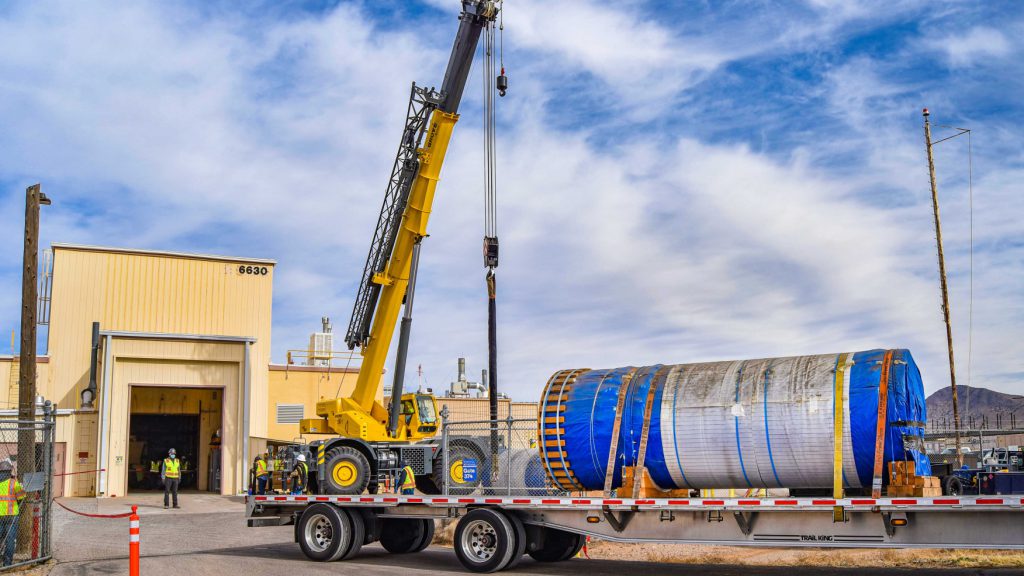
ALBUQUERQUE, N.M. (KRQE) – Sandia National Laboratories reports that it is equipping three 22.5-ton stainless steel storage containers with heaters and instrumentation in order to simulate nuclear waste so that researchers can study their durability. According to Sandia National Labs, the three, 16.5 feet long canisters arrived in mid-November and will be used to study how much salt gathers on canisters over time.
Researchers will also study the potential for cracks that are caused by corrosion induced by salt and stress. Sandia reports that currently, there is not an operating geologic repository in the United States to permanently dispose of spent nuclear fuel.
As a result, spent fuel is being stored at commercial nuclear power plants in storage pools and dry storage canisters.
US nuclear warhead standoff ‘has significant implications for UK’
Kingston Reif, a nuclear analyst at the Arms Control Association, said that he would expect Joe Biden’s incoming administration to take “a critical look” at the W93 programme. It was controversial because of the weak development rationale and that “the weapon would be the first newly designed warhead to enter the US stockpile since the end of the cold war”.
BY: Dan Sabbagh | theguardian.com/uk

Britain’s most senior defence official admitted there would be “very significant implications” for the future of the Trident nuclear deterrent if Democrats in the US Congress refused to fund a next-generation warhead.
Sir Stephen Lovegrove, permanent secretary at the Ministry of Defence, said that the UK was monitoring the US standoff closely but could not say what impact a refusal to start work on the new W93 warhead would have – or how many billions it would cost.
British politicians and officials have, until now, had little to say about the long-running US row over the W93, crudely estimated to be twice as explosive as the ageing Trident warhead now used by the UK.
Peninsula Clean Energy board rejects PG&E nuclear credits
Peninsula Clean Energy board concerned over message more nuclear power sends to public
“I don’t like the idea of the nuclear on our label because it does kind of feel like a vote for it,” PCE Board Member Jeff Aalfs, said.
BY: Curtis Driscoll Daily Journal staff | smdailyjournal.com
Peninsula Clean Energy has accepted hydropower allocation credits but rejected similar ones for nuclear power from PG&E after the board expressed concern about associating with the controversial energy source but, in doing so, it will lose out of potential savings up to $10 million through 2023.
Allocations are offsetting credits given out by Pacific Gas and Electric because of the environmental benefits of hydro and nuclear powers emitting fewer greenhouse gases. Peninsula Clean Energy, or PCE, will use the hydro allocation credits to offset greenhouse gas emissions associated with system power in 2021, with plans to continue through 2023. PG&E holds the option to continue offering the credits in 2022 and 2023.
Continue reading
Rouhani: ‘No negotiations’ needed to restore Iran nuclear deal
“President Rouhani says Iran will return to its commitments that were part of the deal if other signatories do the same.”
BY: Maziar Motamedi | aljazeera.com

Tehran, Iran – Iran’s nuclear deal can be restored without negotiations despite recent escalations following the assassination of a top nuclear scientist, Iran’s President Hassan Rouhani has told world powers.
Rouhani said United States President Donald Trump “scribbled on a piece of paper” in May 2018, unilaterally withdrawing from the nuclear deal.
“The next person can put up a nice piece of paper and sign it and it just needs a signature, we’ll be back where we were. It takes no time and needs no negotiations,” Rouhani said in a televised cabinet speech on Wednesday.
New Aerial Photos Released of the Trio of Failed Nuclear Projects in South Carolina & Georgia: Plutonium Fuel/MOX (Proposed to be Converted into a Plutonium Bomb Plant) and the Vogtle & V.C. Summer Nuclear Reactor Construction Sites
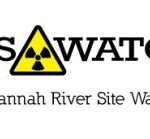 Savannah River Site Watch
Savannah River Site Watch
Columbia, South Carolina
https://srswatch.org/
November 30, 2020
Columbia, SC (aka new Nuclear Ground Zero) — Dramatic aerial photos of the massive nuclear construction projects in South Carolina and Georgia have been released by the public interest organization Savannah River Site Watch. The photos of the three failed projects, two of which have been formally terminated, were taken by a local anonymous pilot who goes by the nom de avion High Flyer.










Continue reading
Lawmakers Decide Against Nuclear Weapons Test Funding in Annual Defense Bill
Nuclear Watch New Mexico echoes the words from The Union of Concerned Scientists (UCS) in “applauding lawmakers for deciding not to authorize funds to prepare for the first U.S. nuclear weapons test in nearly three decades, an outcome UCS experts worked diligently to ensure because any move to resume explosive, underground nuclear weapons testing would undermine U.S. security.”
BY: Union of Concerned Scientists | ucsusa.org
Today, Congress released the conference report on the National Defense Authorization Act (NDAA). The Senate version had contained $10 million to lay the groundwork for a nuclear weapons test if the White House chose to move forward with one. The House took the opposite course, voting to prohibit funding for a nuclear test explosion in fiscal year 2021. The conference report includes neither provision.
“By refusing to give the test a green light, lawmakers are wisely avoiding the risk of an explosive nuclear test setting off a new round in the nuclear arms race,” said Dr. Laura Grego, senior scientist in the UCS Global Security Program.
A dozen premier American scientists with expertise on nuclear weapons issues sent a letter to Congress strongly opposing the resumption of explosive testing of U.S. nuclear weapons, saying it was unnecessary for technical or military reasons and that doing so would have negative security consequences for the United States.
How I Came to Support the Treaty Prohibiting Nuclear Weapons
“During my time serving in the Reagan administration, I came to realize that the only nuclear strategy we had was massive retaliation, which would have made the attacks on Hiroshima and Nagasaki seem almost trivial.”
BY: Lawrence Korb | justsecurity.org

About three years ago, in November 2017, I was honored to be one of about a 100 people invited by the Vatican to an international symposium, “Prospects for a World Free of Nuclear Weapons and for Integral Disarmament.” It was the first global gathering conducted after 120 nations at the United Nations approved the Treaty on the Prohibition of Nuclear Weapons (TPNW).
This treaty, which is the first legally binding international agreement to comprehensively prohibit nuclear weapons, was adopted by the U.N. on July 7, 2017, and needed 50 countries to ratify it in order for it to come into force. The purpose for the treaty was to get world leaders and citizens to consider nuclear weapons as immoral and illegal as chemical and biological weapons, whose use the U.N had previously prohibited.
Pope Francis himself was very invested in the issue. He gave the keynote address in which he condemned not only the threat of their use, but also the possession of nuclear weapons and warned that nuclear deterrence policies offered a false sense of security. He also personally thanked each of the attendees individually.
Nuclear fiasco: SCANA ex-CEO to plead guilty to fraud, get prison, pay $5 million
Former SCANA CEO Kevin Marsh has agreed to plead guilty to federal conspiracy fraud charges, go to prison for at least 18 months and forfeit $5 million in connection with SCANA’s $10 billion nuclear fiasco, according to papers filed in the U.S. District Court in South Carolina.
Nuclear News Archives – 2021
Nothing Found
It seems we can’t find what you’re looking for. Perhaps searching can help.
Nuclear News Archives – 2020
Nothing Found
It seems we can’t find what you’re looking for. Perhaps searching can help.
Nuclear News Archives – 2019
Nothing Found
It seems we can’t find what you’re looking for. Perhaps searching can help.
Nuclear News Archives – 2018
Nothing Found
It seems we can’t find what you’re looking for. Perhaps searching can help.

